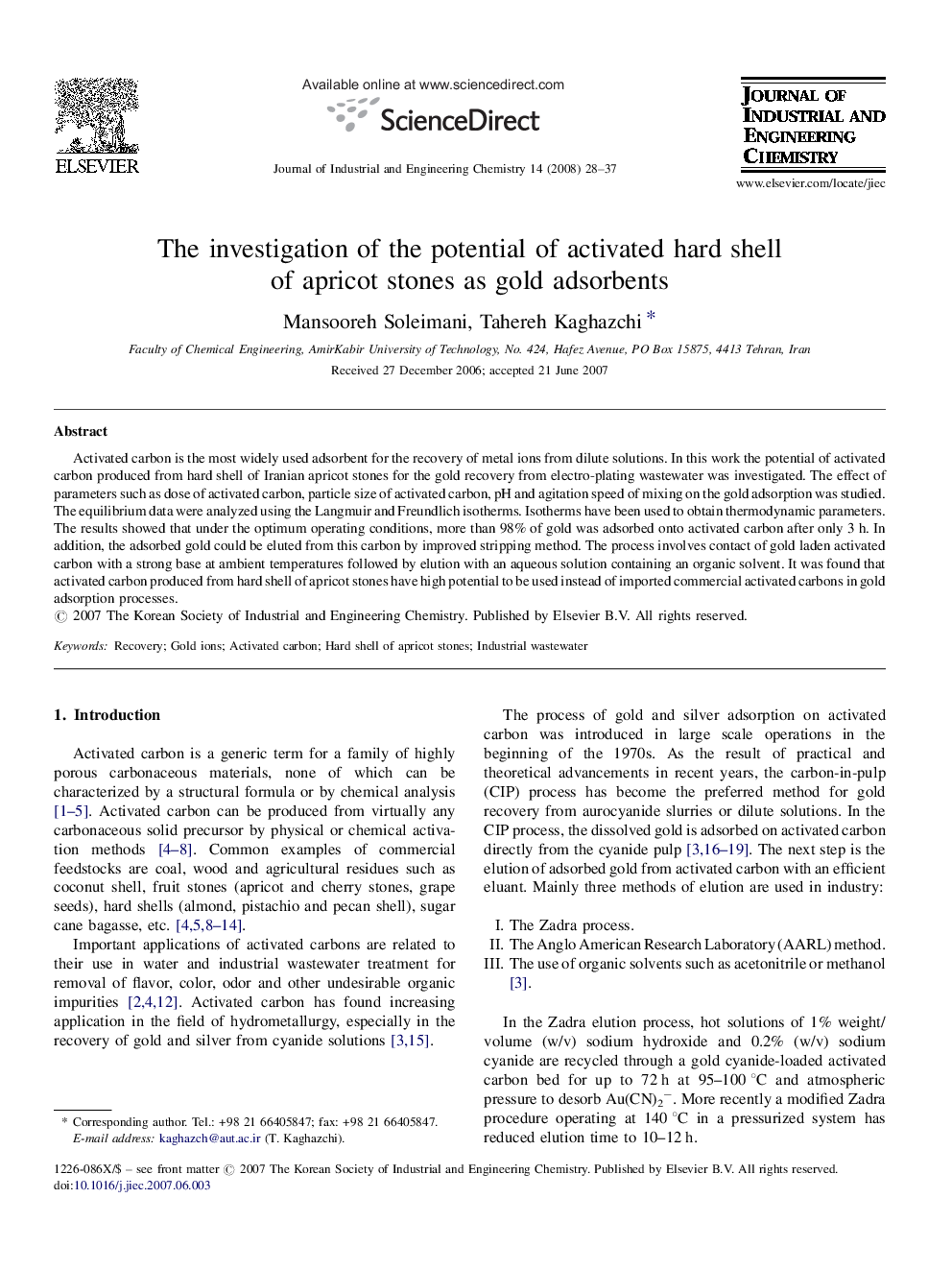| Article ID | Journal | Published Year | Pages | File Type |
|---|---|---|---|---|
| 228993 | Journal of Industrial and Engineering Chemistry | 2008 | 10 Pages |
Activated carbon is the most widely used adsorbent for the recovery of metal ions from dilute solutions. In this work the potential of activated carbon produced from hard shell of Iranian apricot stones for the gold recovery from electro-plating wastewater was investigated. The effect of parameters such as dose of activated carbon, particle size of activated carbon, pH and agitation speed of mixing on the gold adsorption was studied. The equilibrium data were analyzed using the Langmuir and Freundlich isotherms. Isotherms have been used to obtain thermodynamic parameters. The results showed that under the optimum operating conditions, more than 98% of gold was adsorbed onto activated carbon after only 3 h. In addition, the adsorbed gold could be eluted from this carbon by improved stripping method. The process involves contact of gold laden activated carbon with a strong base at ambient temperatures followed by elution with an aqueous solution containing an organic solvent. It was found that activated carbon produced from hard shell of apricot stones have high potential to be used instead of imported commercial activated carbons in gold adsorption processes.
